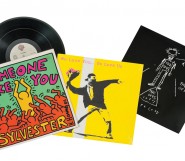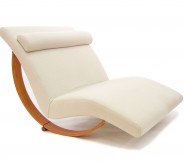Lot #44 - Robert Hoddle
-
Auction House:Mossgreen
-
Sale Name:Fine Australian & International Art
-
Sale Date:02 May 2016 ~ 6.30pm - Part 1 - Lots 1 - 47
03 May 2016 ~ 2.30pm - Part 2 - Lots 48 - 320 -
Lot #:44
-
Lot Description:Robert Hoddle
(1794-1881)
Landscape, Southern New South Wales (possibly Jamberoo looking towards Minnamurra Rainforest)
watercolour
27 x 44.5 cm -
Provenance:Private collection, Melbourne
-
Notes:Even if Melbourne's most congested street is now his namesake, we have Robert Hoddle to thank for the inner-city's simple and effective framework. As Surveyor of Port Phillip District, he drew up the basic outline of the city's central business district. When the blueprint was created on the 28th of March, 1837 - a tour de force which Hoddle supposedly completed in less than two hours1 - Melbourne was little more than a sleepy encampment. However, the forward thinking, extra wide, 'Hoddle Grid' was planned with a metropolis in mind, able to sustain a population over one million. The formulaic grid structure was well suited to Melbourne. An early twentieth century journalist highlighted how 'one does not realise [Hoddle's] genius until one sees the 'back-wynds' of Glasgow and Edinburgh repeated in so many parts of Sydney.'2 Hoddle was also hailed for having thought of parks and gardens as breathing spaces in the growing city.3 When he arrived in Sydney in 1823, he would have found a town haphazardly surveyed; one prescribed by the natural topography of the bay, rather than structured, forward planning. Shortly after settling in Australia, Hoddle was on the move; before designing cities of the future, he travelled far and wide across the new growing Colony. A pioneer surveyor and artist, he was one of the first white settlers to have produced visual records of the areas now surrounding the Australian Capital Territory and Illawarra. Being sparsely settled by the Crown in the early nineteenth century, the area around Jamberoo (where the present work is presumed to have been painted) would have been a safe haven for the Indigenous population in the 1830s. Although here they appear to be utilised as staffage, Hoddle's representation of native figures is neither caricatured nor simply ornamental. The work represents a momentary instant of idyll bathing, showing the traditional owners at peace in their Country, unperturbed by the presence of the white man and his two donkeys to the right of the composition. Deep down, Hoddle must have been acutely aware that he was witnessing and recording a world, a way of life, which was soon to disappear. One that would be erased from so many of the cities and towns which he himself would lay out. The present work is a fine and rare example of Hoddle as a detailed and colourful landscape artist - a man who was just as competent with the brush as he was with the surveyor's chain. Petrit Abazi 1 Robert Freestone, Urban Nation: Australia's planning heritage, CSIRO Pub., Collingwood, 2010, p.87. 2 Designer of Melbourne', The Argus, 28 August 1933, p.6. 3 Ibid.
-
Estimate:A$12,000 - 18,000
-
Realised Price:
-
Category:Art
This Sale has been held and this item is no longer available. Details are provided for information purposes only.










